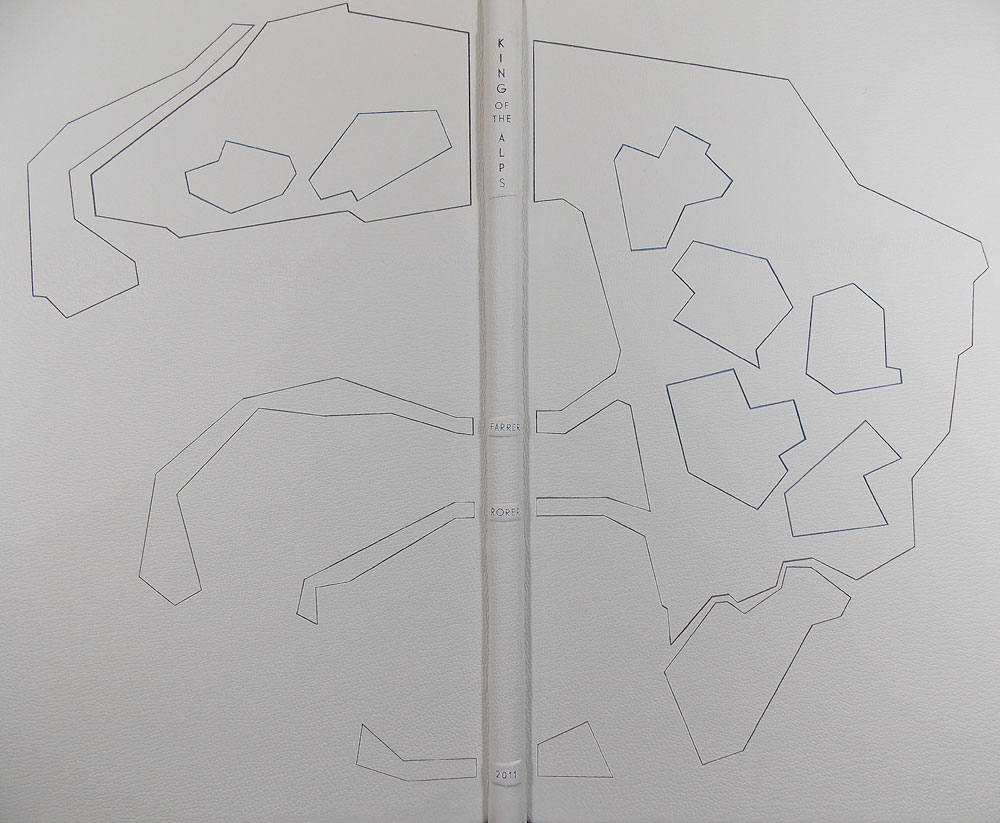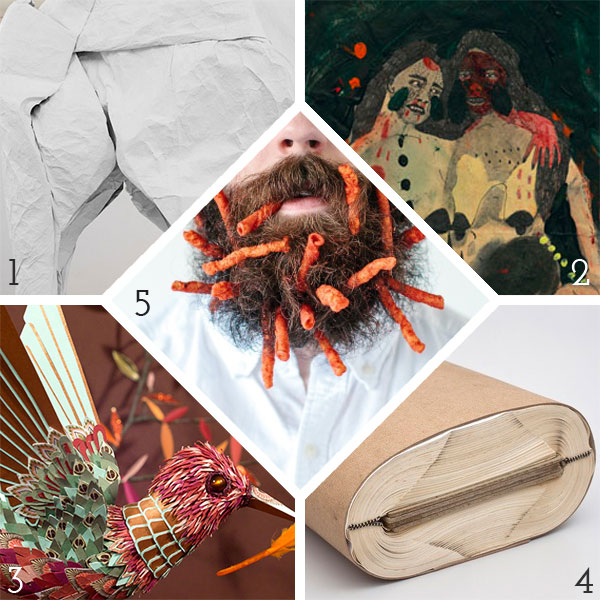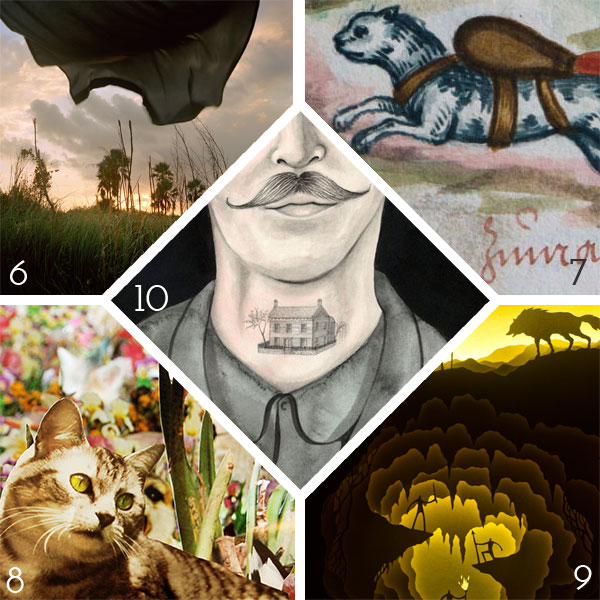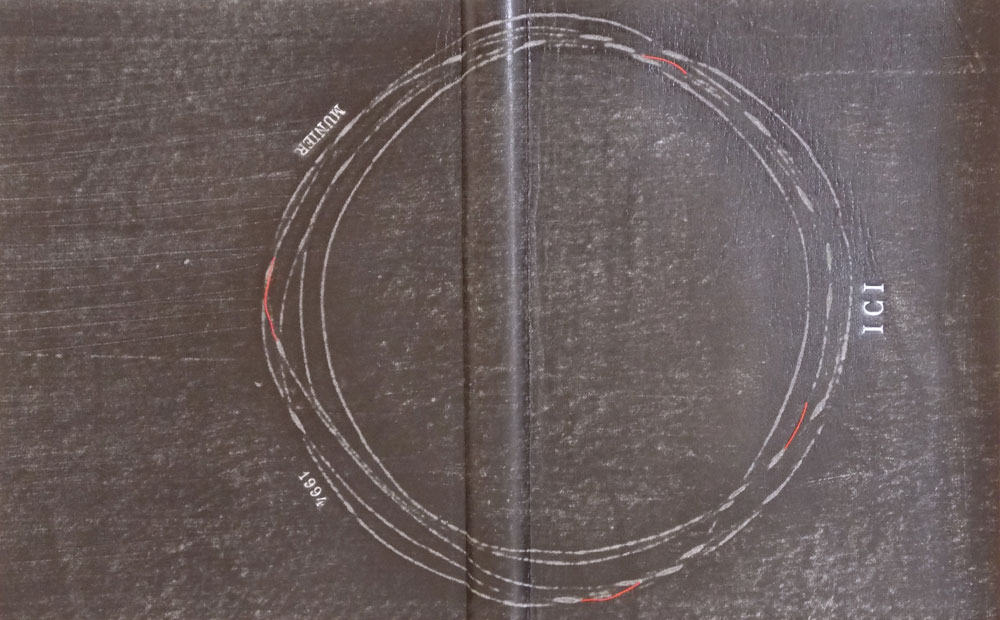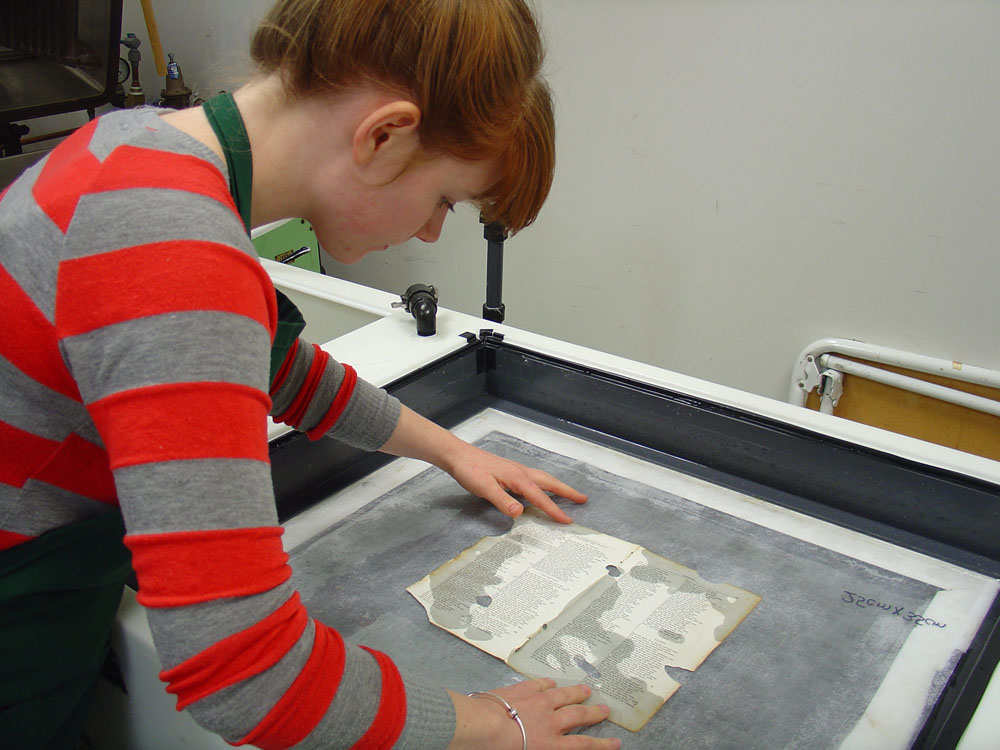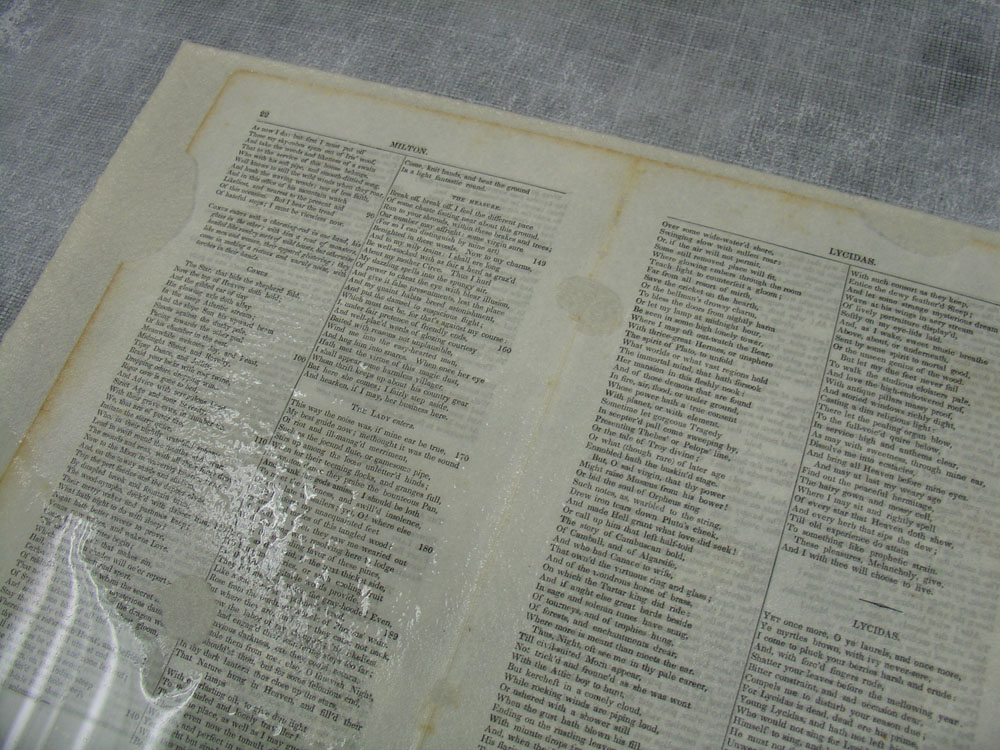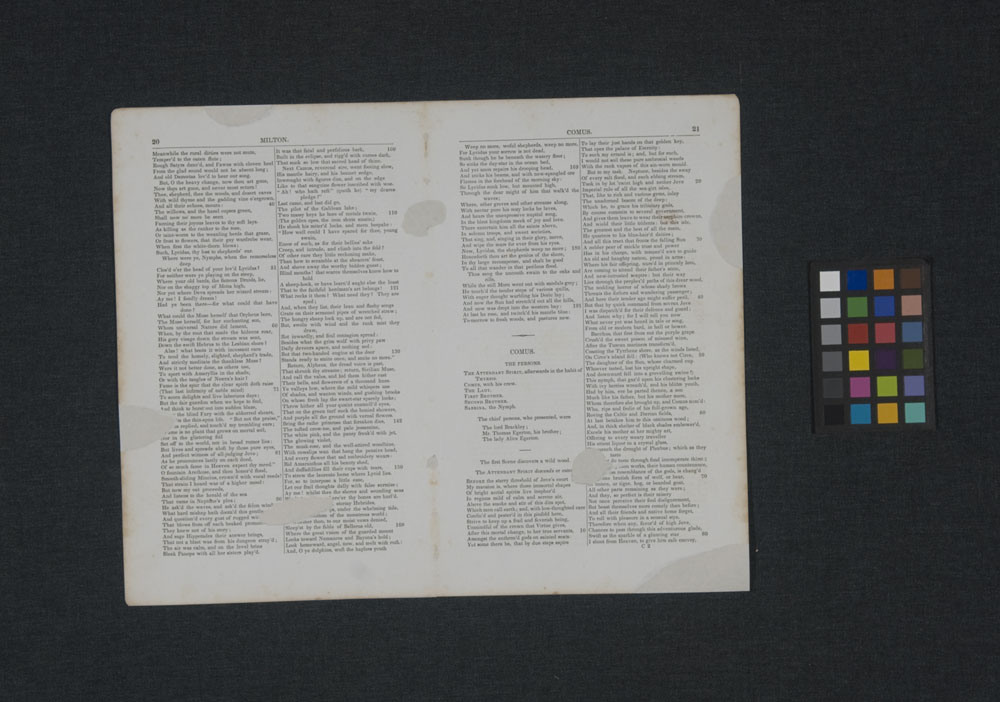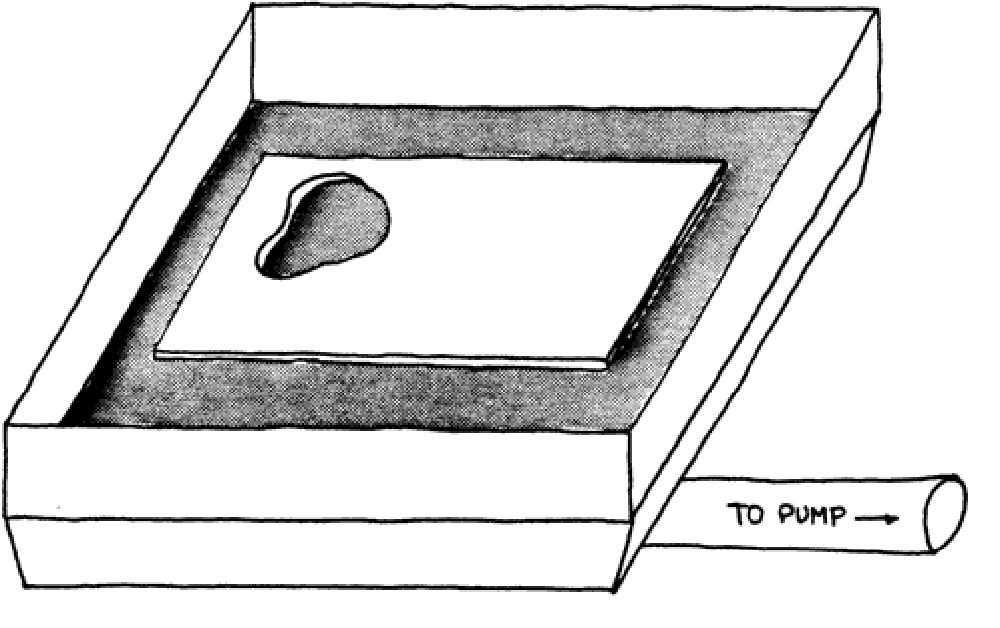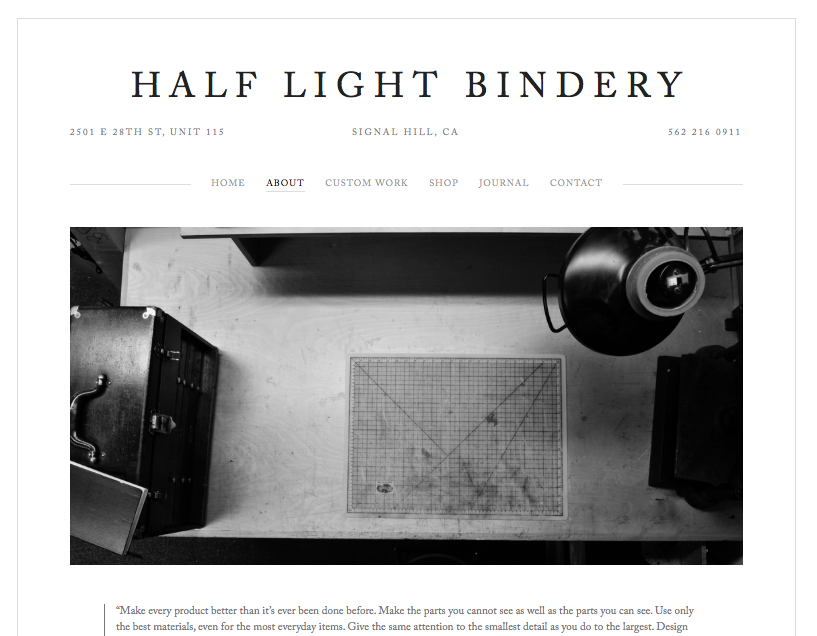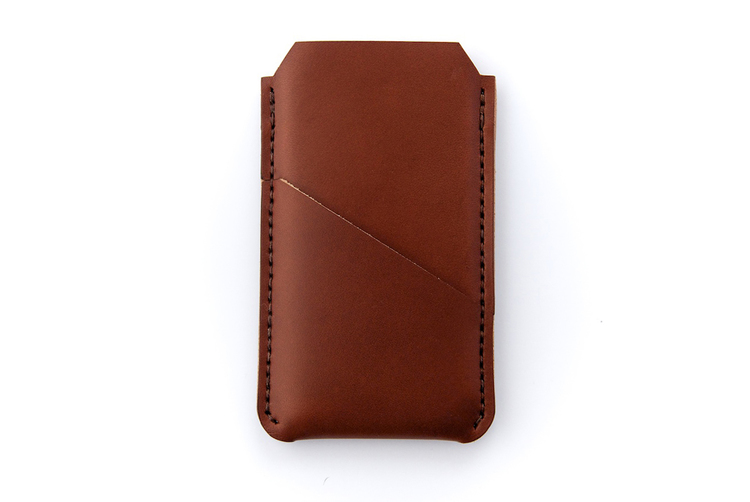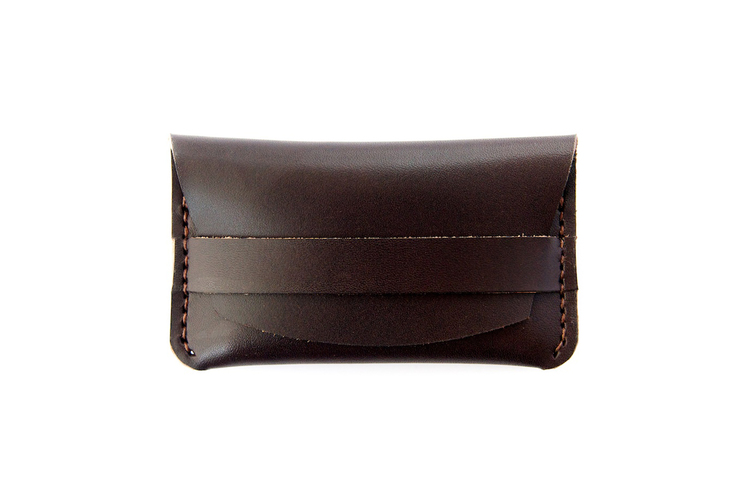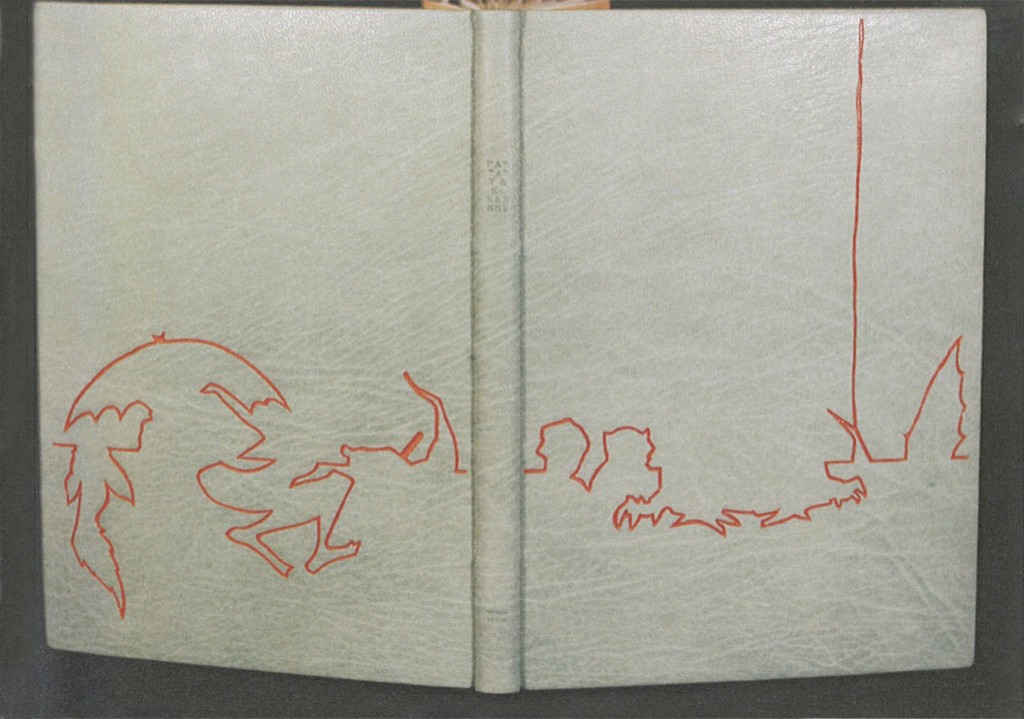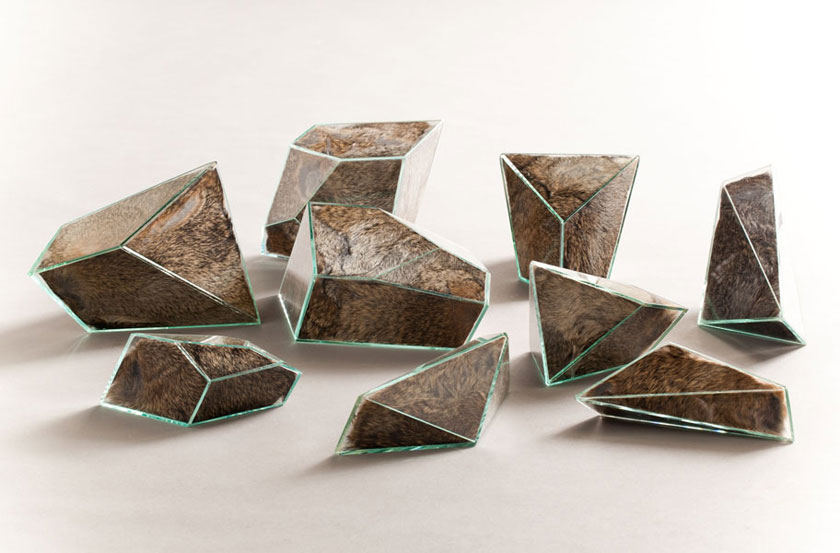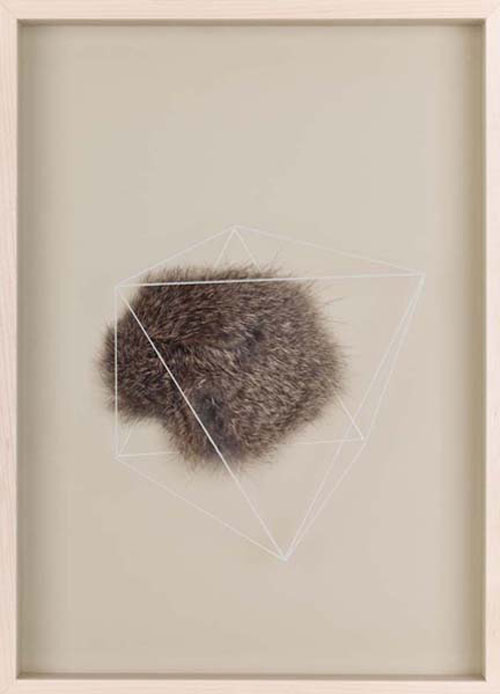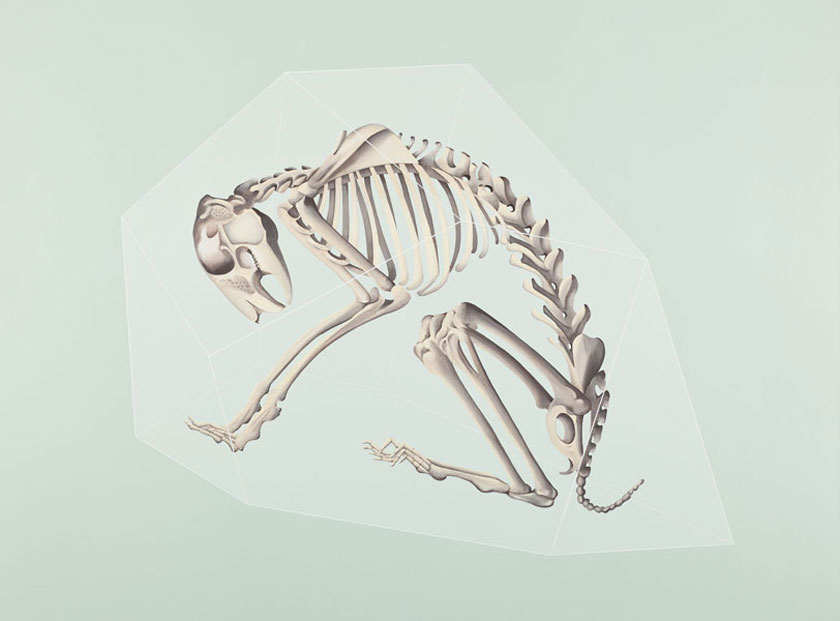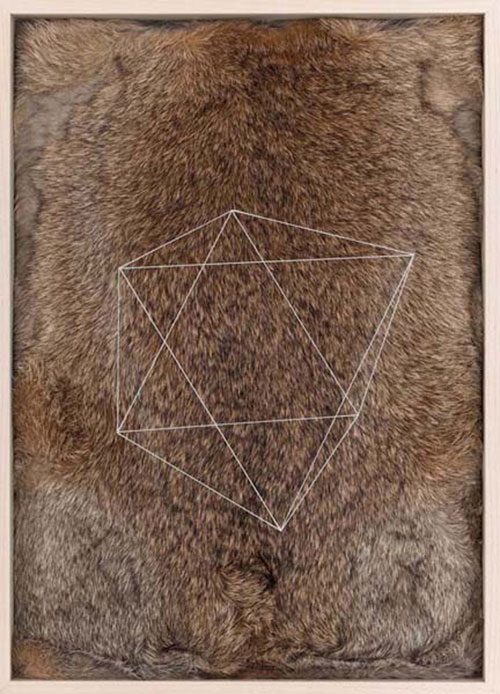Just one more bonus binding from Lang Ingalls to end out the month. King of the Alps by Reginald Farrer with illustrations by Abigail Rorer was bound by Lang in 2013. The Lone Oak Press edition is signed by the illustrator.
Bound in the French technique in full white alum-tawed goat. The geometric design on the covers is an interpretation of one of the illustrations. Lang continues to use the incision technique in which a thin line of leather is removed and painted with acrylics in grey and blue tones. The same palette continues on the inside with blue leather edge-to-edge doublures and grey suede flyleaves. The title, author, illustrator and date of edition are on decorative onlays on the spine.
